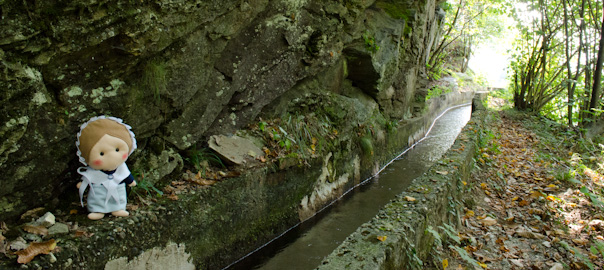Good morning kids!
Today we’ll go on in our walk to the discovery of Bealera Peyrota… We’ve been there once some time ago, d’you remember? Well, today we are at the second stage of our walk. We are now at Rocha Pisoira.
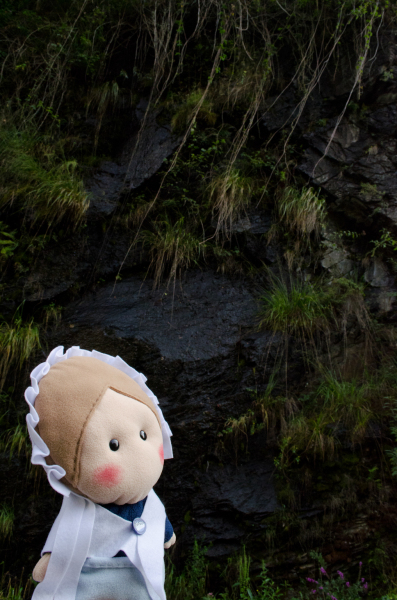
Do you get what its name means? Literally it means “the peeing rock”… isn’t it funny? Well, it always makes me laugh, too… But the reason for this name is very, very easy.
Due to the fact that Bealera Peyrota runs right above this rock, water that continuously flows from the drain’s spills doesn’t let the stones ever be dry.
Do not think that leaks of water from the Bealera are because of people’s neglect! You have to remember that the only way to make water flow from the stream to the hill is by keeping the drain’s slope exact all the way long its way… and it’s a long way from Angrogna to San Giovanni (in Luserna). Sometimes the route of Bealera Peyrota met big obstacles, just like this rock!
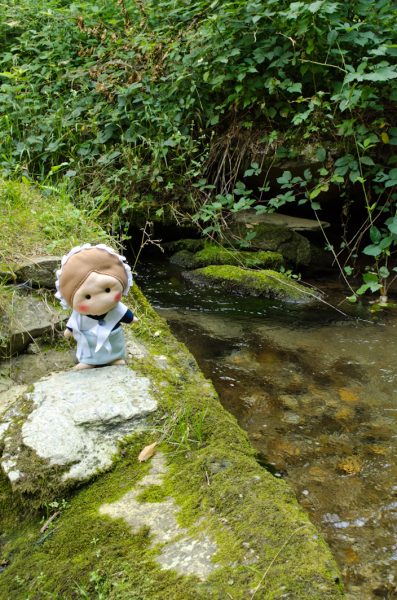
What was the solution in these cases? People had to arm themselves with patience and work with perseverance, but, above all, they had to look for the best and smartest solution.
In this case they decided to dig the millstream straight in the rock, making the water flow through the woods up to San Giovanni.
Once this strategy had also another aim: thanks to the dig of the “bealera”, all of the rainwater was collected and channeled towards the valley bottom, avoiding floodings and other disasters.
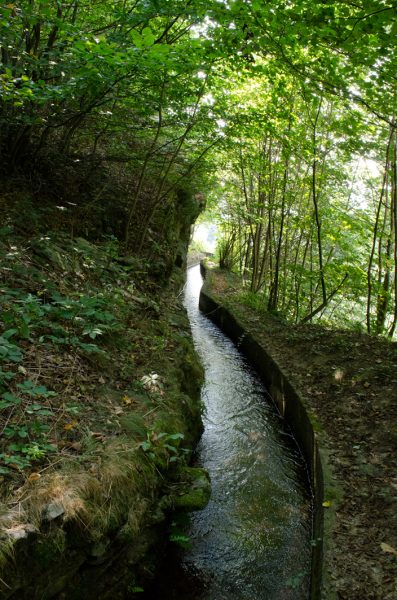
Unfortunately today most of the course of Bealera Peyrota is channeled into PVC-vinyl pipes that avoid gathering of rainwater, and that make the water stream not visible any more; this solution, even if less “romantic”, allowed to save a lot of money and a lot of work that previously had to be spent on “roide”, the collective shift of cleaning and maintenance of the millstream.

If you search carefully, however, there are still some points where the Bealera Peyrota is visible and is very similar to the ones you could see 600 years ago.
Just like above Rocha Pisoira, some dry-stone walls were built upstream the watercourse to prevent landslides from blocking the creek, but also to strengthen the “bealera” when it was built on steep grounds.
The banks of the canal were then protected using big “lose” (large flat stones used also for covering roofs) and the cracks between the stones were stopped up with clods of silt.
Do you understand now how fragile was the work that had to be done and the reason why “roide” should be so frequent?
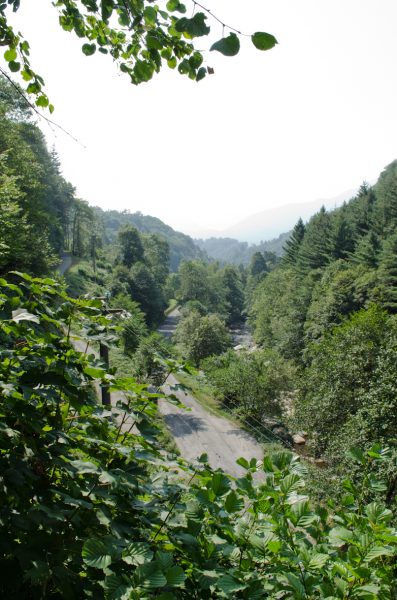
The only difference today in this portion is that the stone walls have been replaced by concrete banks, but there are still some leaks and Rocha Pisoira is still called that way because water keeps on trickling long its side. And if one day the rock dries… What would its name become?
How to get here:
coming from Pinerolo/Torino to Val Pellice, just before getting to Torre Pellice, turn right towards Pradeltorno (Angrogna).
The place you’re looking for is on your left; as you go ahead the paved street you’ll notice a road sign just where “Rocha Pisoira” is.
Do you want to read the tale in Italian ?
